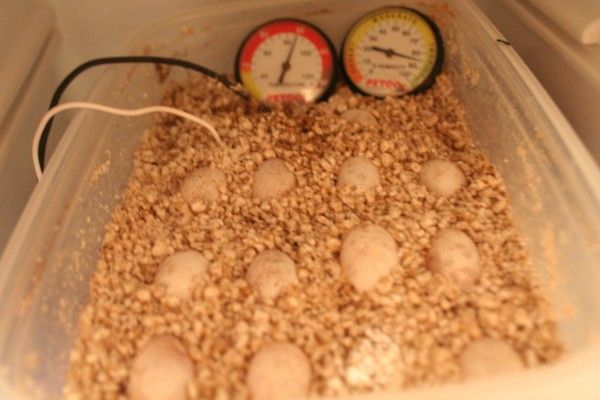
Bearded dragon mating can appear quite violent. Bearded dragons breed very easily.
The male will approach and circle the female. His beard will be darkened, and he
will bob his head up and down. The female will respond by bobbing her head up and
down and waving her arm in a circular motion. The male will secure the female by
holding on to her neck or shoulder skin with his mouth. The male everts his hemipenis
and once their cloaca are aligned, he inserts either one or both of his hemipene into
the female’s cloaca. Once the female is ready to be let go, she will raise her head to
a vertical position.

Using a small container big enough to fit the eggs in (about an inch apart), add a mix of
4 parts vermiculite to 5 parts of water. The mix should be damp, not wet (dripping). It is
better to add more water later than too much at any one time. Eggs need moisture from the air,
not the substrate. The containers should have lids with ventilation holes. Transfer the eggs
to a small container half filled with vermiculite, half burying them. Place each egg from the
lay box into the small container in the same orientation you find them. The eggs should not
touch the lid or sides of the container. Monitor the eggs until they hatch. If condensation
forms on the lids, there is too much moisture. Remove the lid for a day to reduce the moisture
content. If the eggs start collapsing then spray some more water on the substrate, not the eggs.

Some hatchlings will grow faster than the others. The different sizes will need to be separated
from each other to protect the smaller ones and give them a little less competition of resources
to grow just as well. It is not abnormal for hatchlings kept together to bite off toes and what
not of their mates.The hatching size will vary for the species. The 3 clutches of free ranging wild
Pogona minor (previously mentioned in this post) hatched at a mean snout to vent length of 36.1 mm
and just 1.74 grams. Feed baby bearded dragons small invertebrate such as cockroaches and crickets.
The hatchlings can be quite active chasing prey.Baby bearded dragons will grow to full size within 2 years.
In captivity they will usually grow quicker due to conditions.


